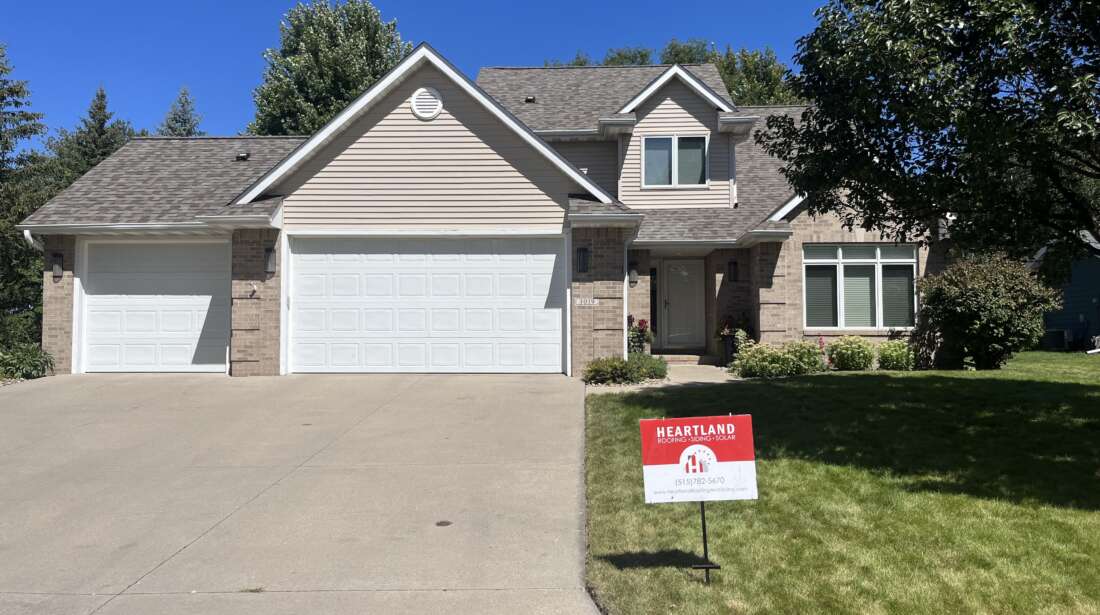Replacing your roof is a significant investment and timing is crucial to ensure your home remains safe and protected from the elements. How do you know when to replace your roof, so that you, your family and your belongings are protected? Generally, a roof should be replaced every 20–30 years, depending on the material and the quality of installation. However, the following signs indicate it may be time for a replacement sooner.

1. Age of the roof
If your roof is nearing the end of its expected lifespan, it’s wise to start planning for a replacement. What is the average lifespan of a roof? It depends on the roofing material. A roof with asphalt shingles should last about 20 years, while a roof with fiber cement shingles should be replaced every 25 years.
Wood shake shingles would be the next longest-lasting roof type, with a lifespan of about 30 years. A roof with slate, copper or tiles should keep your home safely covered for nearly five decades. Longevity is one of the many elements to consider when choosing the material for a roof replacement. No matter what material you choose, a new roof is going to take a bite out of your budget. But it can save you money long-term, help protect your home’s value and add a return on your investment when it comes time to sell your house.
2. Visible damage
What kind of shape are your shingles in? Look for cracked, curled, chipped or pitted shingles, which are signs of wear and tear. The number of damaged shingles can help you know when to replace roofing. If over a third of them seem to be in rough shape, it’s time to act.
Additionally, with asphalt shingles, you may see “bald spots” where granules have come loose or you could find granules in your gutters. This could indicate the shingles are deteriorating.
3. Leaks and water damage
Water stains on your ceiling or walls can be a sign of a leaking roof. Even if you don’t see damaged or missing shingles, it’s still a good idea to check out the roof from the inside at least once each year. Go to your attic or crawl space to look for signs of moisture — mold, mildew and watermarks. Persistent leaks can lead to structural damage, so it’s essential to address them promptly.
4. Sagging roof
A sagging roof is a serious issue that often indicates structural problems. When you notice this type of roof damage, we recommend seeking a roofing contractor for an inspection as soon as possible. To ensure the home remains safe, take immediate action. A sagging roof usually requires a full roof replacement.
5. Moss and algae growth
While moss and algae don’t always mean you need a new roof, they can be a sign of trapped moisture. Over time, this can damage the roofing material. See our FAQs to learn what you should do when you find moss on your roof.
6. Increasing energy bills
A damaged roof can affect your home’s insulation, leading to higher heating and cooling costs. If you’ve noticed a spike in your energy bills, over the last year or so, it might be time to inspect your roof — especially if the cost has been steadily creeping up with no explanation. It could mean cool air leaks from the home through a potentially damaged roof. If you see an increase, you may also want to check your doors and windows to ensure they’re tight, sealed, and energy efficient.
7. Storm damage
Severe weather conditions, like hail or high winds, can cause significant damage to your roof. After a major storm, take a few steps away from your house and look at the roof. If shingles are missing, we recommend connecting with a roofing professional as soon as possible.
While you may not need an immediate roof replacement, any gaps in the shingles point to potential damage from future rain and storms. Once shingles are loose, the space between the shingle and the base makes it much easier for the wind to get underneath other nearby shingles and pry them from the roof, too. Get into the habit of checking for missing shingles regularly after storms. That way, you and your local roofing contractor can take care of any issues before they develop into serious problems.
Regular roof inspections and maintenance can help extend the life of your roof, but when the signs of damage become apparent, timely replacement is key to protecting your home and avoiding more costly repairs in the future. Consulting with a professional roofing contractor can provide a clear assessment of your roof’s condition and the best course of action.
Think you need repair or want a professional opinion about the status of your roof? Call us at 515-219-4847 or visit our Contact Us page to request an appointment with a trained Heartland professional inspector.


